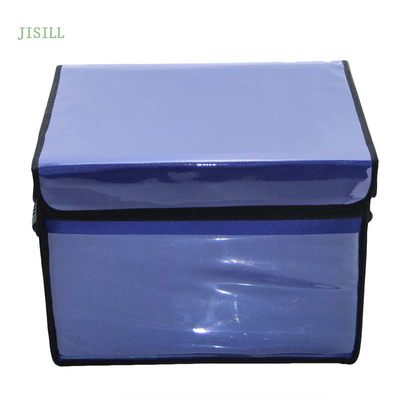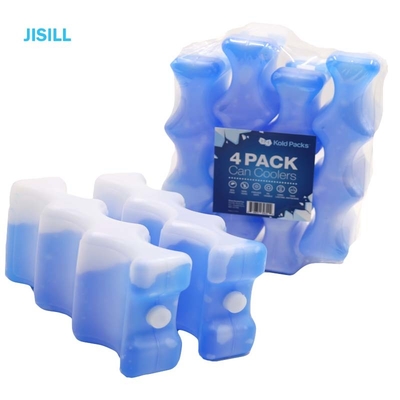In the category of fresh cold chain, the definition of "cold chain" and "refrigerated" is often more confusing. What is the difference between a cold chain car and a refrigerated car? Is it the same kind of transportation? In fact, there is still a certain difference between the two. What are the specifics? Lunch Ice Packs manufacturers will come to tell you.
By definition:
The cold chain car is mainly in the whole process of transportation. Whether it is loading and unloading, changing the transportation mode, replacing the packaging equipment, etc., the goods are always transported at a certain temperature.

Lunch Ice Packs
A refrigerated truck is a closed van that transports frozen or fresh-keeping goods. The refrigerated truck is a refrigerated special transport vehicle equipped with a refrigeration unit and a polyurethane insulated box. The refrigerated truck can be carried by the manufacturer and the chassis. Ability, car type to classify.
From the definition point of view, it is undoubted that the cold chain car maintains a certain temperature, and the refrigerated truck uses the refrigeration unit for refrigeration and preservation.
Refrigerated transportation: logistics links such as medium and long-distance transportation of food and short-distance distribution. This part of refrigerated transport is the most familiar part of us. Refrigerated transport includes logistics links such as medium and long-distance transportation of food and short-distance distribution. Refrigeration mainly involves several types of transportation vehicles such as railway refrigerated trucks, automobile refrigerated trucks, refrigerated vessels, and refrigerated containers. The vehicles are the main refrigerated transport in China. In the process of refrigerated transportation, temperature fluctuation is one of the main causes of the decline of food quality. Therefore, the transportation means should have good performance. While maintaining the specified low temperature, it is necessary to maintain a stable temperature. Long-distance transportation is especially important. The frozen sales link is the most common part of daily life. The frozen sales include the frozen storage and sales of various cold chain foods into the wholesale and retail chain. It is completed by manufacturers, wholesalers and retailers.
With the rapid development of various supermarket chains in the city, various supermarket chains are becoming the main sales channels for cold chain foods. In these retail terminals, a large number of refrigerated/frozen display cabinets and storage warehouses are used, which gradually becomes a complete food. An important part of the cold chain.
There are three types of cold chain transportation: fresh, cold, and frozen. For the entire cold chain logistics, the people in the special vehicle industry are most concerned about the chain of cold chain transportation. Like a Cool Box for Vaccine Transport, it has to be kept at a certain temperature, not just refrigerated. According to the processing degree of food, cold chain transportation can be divided into two categories: primary agricultural products and processed foods. Primary agricultural products include vegetables, fruits, meat, poultry, eggs, milk, aquatic products, and flower products; processed foods include frozen foods, packaged cooked foods such as poultry, meat, and aquatic products, ice cream and dairy products, fast food ingredients, and Breast Milk Ice Pack which used to preserve breast milk.
Different foods have different temperature requirements for preservation, so the types of vehicles that need to be transported are also different. According to the different temperatures required for food transportation, cold chain transportation can be subdivided into three categories: fresh-keeping, cold-fresh, and frozen.
Insurance goods include vegetables and flowers, fruits, fresh-keeping vaccines, fresh aquatic products, transportation temperature requirements of 2-8 degrees; cold and fresh goods mainly include acid-discharged meat, river seafood products, soy products, vaccine products, For chocolate, etc., the transportation temperature requirement is between 0 and -5 degrees; the frozen goods include quick-frozen food, quick-frozen seafood fresh products, frozen meat, frozen meat products, etc., and the transportation temperature is required to be between -10 degrees and -18 degrees.
The above is the difference between a cold chain car and a refrigerated car. Have you learned it?

 Your message must be between 20-3,000 characters!
Your message must be between 20-3,000 characters! Please check your E-mail!
Please check your E-mail!  Your message must be between 20-3,000 characters!
Your message must be between 20-3,000 characters! Please check your E-mail!
Please check your E-mail! 










